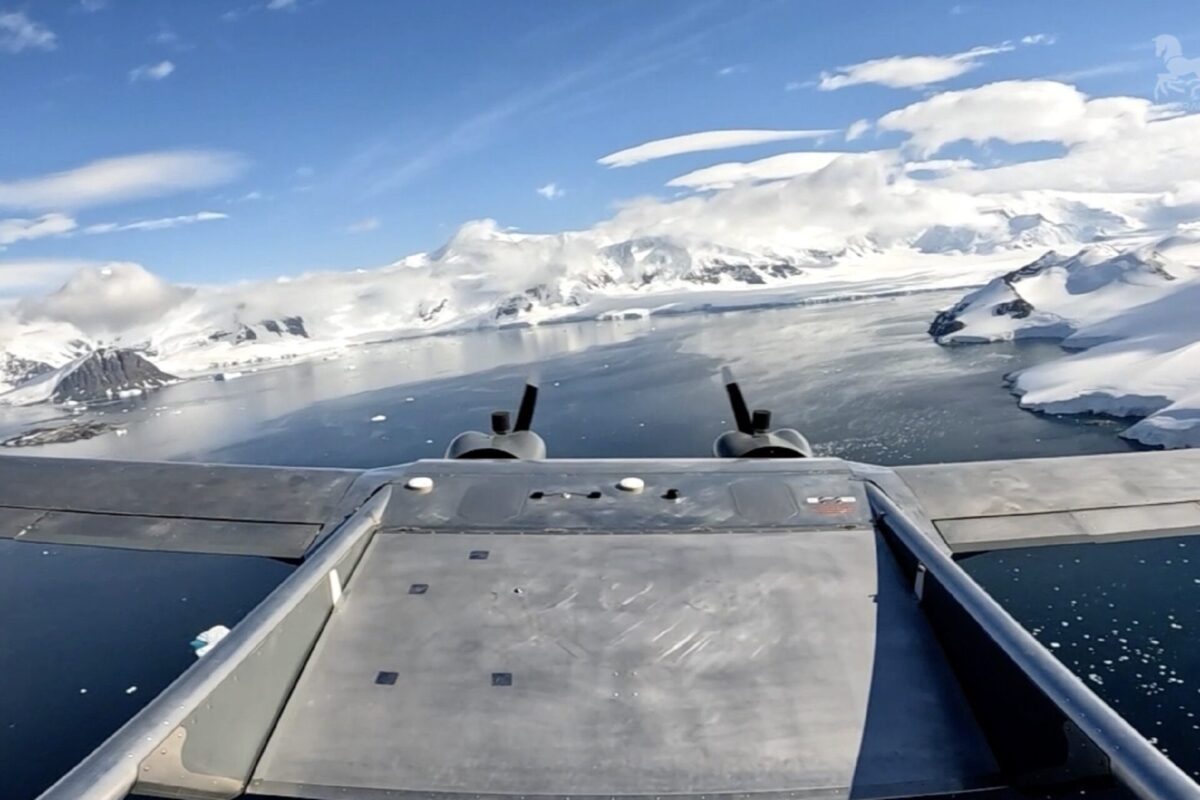Our Terms & Conditions | Our Privacy Policy
Windracers drone helps unlock hidden areas of Antarctica
A Windracers drone has been assisting scientists from the British Antarctic Survey (BAS) to collect data on previously unchartered areas of the ice laden landscape
Windracers ULTRA, an autonomous heavy-lift cargo aircraft, was deployed for autonomous Beyond Visual Line of Sight (BVLOS) missions to map out remote parts of West Antarctica and investigate how the Earth’s crust was created and deformed.
New research gathered by the scientists using gravity and magnetic sensors was presented in the Journal of Geophysical Research, revealing huge bodies of frozen magma, hidden from view.
Photos of previously unexplored islands, taken at the same time, show how these rocks were deformed as the mountains of the Antarctic Peninsula were pushed up by movement of the Earth’s tectonic plates.
“We’re proud to support the world-class scientists at British Antarctic Survey and play a role in deepening our understanding of climate systems and sea-level change. We are grateful to the British Antarctic Survey for their ongoing collaboration with Windracers,” said Stephen Wright, Founder and Group Executive Chairman of Windracers on July 29, 2025.
 Windracers
Windracers
He added: “These original missions demonstrate how Windracers ULTRA is already delivering real-world impact and operating in one of the world’s most challenging environments.”
According to Windracers, the long-range, heavy-lift capability and autonomous operation of Windracers ULTRA meant BAS experts were able to “quickly and effectively map out the hidden geology of this inaccessible region”.
“Working with Windracers on this research was an exciting opportunity to take the concept of large uncrewed aerial vehicle delivering environmental science data from a dream to a demonstrated reality,” said Tom Jordan, Geophysicist at the British Antarctic Survey.
He added: “This project paves the way for new ways of collecting data across multiple science areas around Antarctica, providing insights into the continents past, and the critical information needed to monitor and predict how the continent will change in response to the warming climate into the future.”
BAS first received the twin-engine, 10-meter-long, Windracers ULTRA drone on February 2, 2024.
Later this year, Windracers will also launch a new operational hub in Malawi to support middle-mile delivery of humanitarian across Africa.
In January 2025, Windracer unveiled its newest unmanned aerial vehicle (UAV), ULTRA MK2. The MK1 was deployed in Antarctica.
The ULTRA MK2, which was developed at Southampton University, has a 10m-wingspan, travelling up to 1,000 km at 77 knots with a cargo capacity of 150kg.

Images are for reference only.Images and contents gathered automatic from google or 3rd party sources.All rights on the images and contents are with their legal original owners.



Comments are closed.